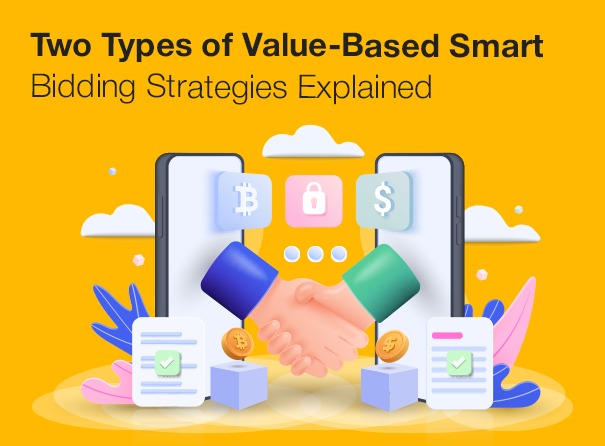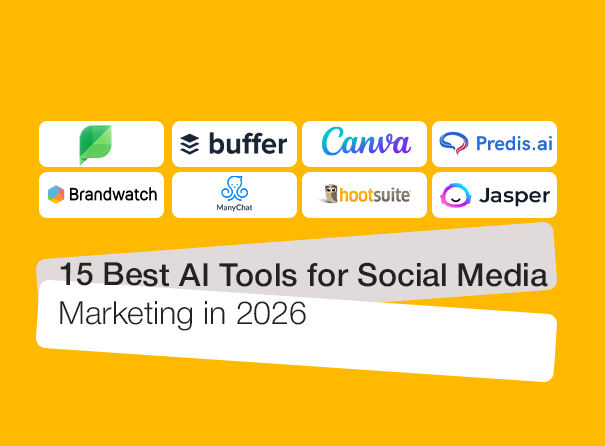TL;DR: - Value-based Smart Bidding in Google Ads helps advertisers focus on revenue instead of just conversions. It automates bid strategies using machine learning. The two main types, Maximize Conversion Value and Target ROAS, allow businesses to aim for the highest total value or achieve a specific return on ad spend. While automation improves performance, human expertise remains crucial for strategy, creative input, data interpretation, and ethical oversight.
As digital advertising becomes more data-driven, marketers are using automation to keep pace with shifting consumer behavior and platform changes. One significant development in this area is Google Ads' Smart Bidding, especially its value-based models that concentrate on revenue, not just clicks or conversions.
At Inqnest, we assist brands in navigating these evolving tools by combining automation with strategic human insight. In this blog, we'll explore the two types of value-based Smart Bidding strategies and discuss why human expertise remains critical for success in paid advertising.
What Is Value-Based Smart Bidding?
Smart Bidding refers to automated bidding strategies in Google Ads that use machine learning to optimize for specific goals, such as conversions or conversion value. Value-based bidding advances this by prioritizing the actual revenue generated per action instead of just maximizing conversions.
This approach enables advertisers to focus on quality and profitability rather than quantity. It's a game-changer for ecommerce brands, lead generation campaigns, and service-based businesses with different customer values.
If you're interested in how Smart Bidding fits into a full-funnel paid media strategy, this guide to paid advertising explains how modern advertising ecosystems work. A full-funnel strategy covers all stages of the customer journey, from brand awareness to conversion, and Smart Bidding can be a powerful tool at each stage.
The Two Types of Value-Based Smart Bidding Strategies
Let's answer the central question: what are the two types of value-based Smart Bidding strategies?
Maximize Conversion Value
This strategy aims to maximize the total value of your ad spend without a specific return on ad spend (ROAS) target.
How it works:
Google automatically adjusts your bids in real time to favor higher-value conversions. If two potential clicks cost the same, the algorithm will choose the one more likely to lead to a higher-value purchase.
Ideal for:
- Brands with flexible ROI targets
- Ecommerce sites selling items with different profit margins
- Businesses focused on revenue growth over strict ROAS
Target ROAS (tROAS)
Target ROAS continues this approach. You set a specific revenue target for every dollar spent, and Google bids to meet or exceed that goal.
How it works:
Let's say your target ROAS is 400% - Google will optimize bids to try to deliver $4 in revenue for every $1 spent.
Ideal for:
- Businesses with precise margin requirements
- Campaigns with clearly defined performance KPIs
- Advertisers running large-budget, conversion-heavy campaigns
For a deeper understanding of how this fits into broader digital strategies, check Inqnest's Paid Advertising Services, where we tailor Smart Bidding models to business goals.
Why Human Expertise Still Matters
While automation can manage complex data and real-time bid changes, human judgment remains vital for several reasons.
Strategic Campaign Planning
Google's algorithm can only act on the instructions you provide. It's human experts, like our team at Inqnest, who define the strategy, like setting appropriate ROAS targets and deciding which products or services to prioritize.
Automation can't align campaigns with seasonal demand, product lifecycle stages, or broader brand goals. For instance, a human expert can adjust bidding strategies during holiday seasons or when a new product is launched, or align campaigns with the brand's long-term growth goals. Humans establish these connections, ensuring your campaigns are always in line with your business's broader objectives.
Data Interpretation & Optimization
Automated bidding relies heavily on historical data. However, when trends change, competition rises, or a new product launches, machine learning might not adjust quickly enough.
Our strategists examine performance data in the context of market shifts, making timely adjustments that keep your campaigns on track.
Creative Input & Messaging
Algorithms can test ad variations, but they cannot create emotionally compelling messaging. Only humans can craft headlines, visuals, and CTAs that resonate with your brand voice and consumer psychology.
Whether creating responsive search ads or video content, Inqnest ensures that creativity and conversion work together.
Ethical Oversight
Automation is powerful, but it isn't neutral. If left unchecked, bidding algorithms can unintentionally discriminate or promote biased patterns. For example, they might favor certain demographics over others, leading to unfair targeting. Human oversight guarantees ethical advertising practices and inclusive targeting strategies, ensuring your ads reach the right audience in a fair and respectful manner.
When to Use Value-Based Bidding
Value-based bidding works best when:
- You have accurate conversion tracking with value assigned to each goal
- Different conversions have different profit margins (e.g., lead vs. sale)
- You're focused on long-term customer value, not just immediate ROI
- You want to scale your campaign intelligently, not just aggressively
This approach lets advertisers go beyond basic cost-per-click (CPC) or cost-per-action (CPA) metrics and tie ad spend directly to business outcomes.
Common Challenges and How to Solve Them
While value-based bidding is powerful, many businesses struggle to implement it correctly. Here are some common issues we help clients resolve:
- Inaccurate or Incomplete Conversion Tracking: - Without precise tracking, Smart Bidding is ineffective. Audits your setup to ensure every meaningful conversion is captured with proper value tags.
- Setting Unrealistic ROAS Targets: - Many brands set targets that are either too high or too low. We help define achievable benchmarks based on your industry, past performance, and business goals.
- Misaligned Campaign Structure: - Smart Bidding works best when campaigns are structured to give the algorithm clear signals. We organize ad groups, audiences, and product feeds in a way that improves learning and performance.
Combining Automation with Strategy
Smart Bidding works with you, not instead of you. Adopt a hybrid model using Google's machine learning while applying human insight to refine every campaign.
How does it work:
- Decide whether to use Maximize Conversion Value or Target ROAS
- Regularly review bidding performance and adjust targets
- A/B test different bidding strategies for different audience segments
- Monitor competition shifts and adjust your bids
- Align your ads with creative messaging, brand voice, and customer lifecycle
Final Thoughts
By understanding the two types of value-based Smart Bidding strategies — Maximize Conversion Value and Target ROAS and combining them with clear business insight, brands can make better, more impactful decisions. This knowledge empowers you, giving you the confidence to run a profitable ad campaign.
At Inqnest, we don't just run ads — we create strategies that boost your revenue. From setting up conversion tracking to refining ROAS targets, our team helps you maximize Google's Smart Bidding while keeping your business goals in focus.
Frequently Asked Questions (FAQs)
What are the two types of value-based Smart Bidding strategies in Google Ads?
The two types are Maximize Conversion Value, which aims to get the highest return without a specific ROAS goal, and Target ROAS, where you set the return on ad spend and Google adjusts bids to meet that target.
When should I use Target ROAS instead of Maximize Conversion Value?
Use Target ROAS when you have clear profitability goals and want to manage your ad spending effectively. It works best for large campaigns with well-defined KPIs and accurate conversion value tracking.
Can Smart Bidding work without human involvement?
Not really. While Smart Bidding automates bids, human experts are needed to set strategy, interpret data, write effective ad copy, and make changes based on market trends or business needs.
What do I need in place before using value-based bidding?
You need reliable conversion tracking with clear values for each action. It’s also important to have a well-organized campaign setup, realistic ROAS goals, and a plan for ongoing performance review.
How does Inqnest support value-based Smart Bidding campaigns?
Inqnest checks your conversion setup, helps establish realistic ROAS targets, organizes campaigns for optimal learning, and offers strategic oversight to make sure Smart Bidding supports your business goals and delivers measurable ROI.











.png)








.jpg)



.png)
.png)
.png)

.png)
